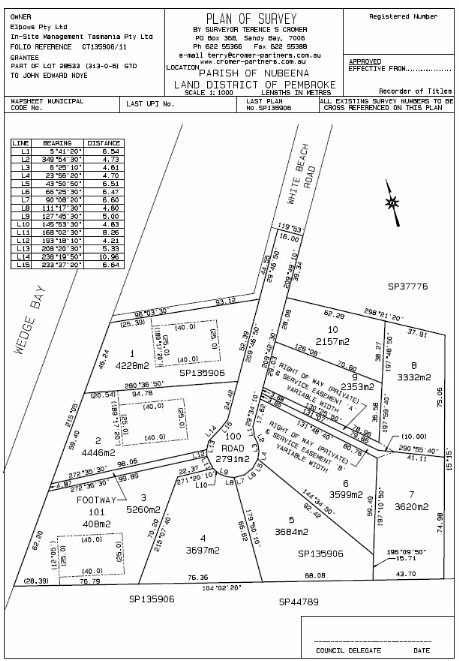Map Datums
Map Datums:The following is a brochure authored and distributed by the Department of Primary Industries Water and Environment, Information and Land Services Division, Tasmania.
For GDA94 read MGA (my words)
IMPORTANT INFORMATION FOR USERS OF MAPS IN TASMANIA
A new datum is being used for mapping and spatial information in Australia. This leaflet describes how the change will affect Tasmaps and other products published by the Information and Land Services Division of the Department of Primary Industries Water and Environment, Tasmania (DPIWE)
Background
The new datum, Geocentric Datum of Australia 1994 (GDA94) is being progressively introduced by all government mapping agencies throughout Australia. It replaces the Australian Geodetic Datum 1966 (AGD66).
The primary reasons for making the change to GDA94 are:
• It is compatible with the datum used by global navigation systems, such as the WGS84 datum used by the satellite-based Global Positioning System (GPS).
• It is compatible with national mapping activities, such as hydrographic charting, which are already based on WGS84.
It will provide a single standard for the storage, management, analysis, and display of spatial information throughout Australia.
The Information and Land Services Division of DPIWE has started publishing maps on GDA94. All new 1:25,000, and series maps published after 31 March 2003 will be based .on GDA94.
How does GDA94 differ from AGD66?
The GDA94 datum defines a mathematical surface that best fits the shape of the earth as a whole with its origin at the earth's centre of mass, hence the term "geocentric".
The AGD66 datum defines a shape that suits the Australian region, with an origin that does not coincide with the centre of the earth, a non-geocentric datum.
Because the datums have different origin points, GDA94 and AGD66 coordinates differ by approximately 200 metres in Tasmania.
How does the change to GDA94 affect maps?
The change will show as a shift in the position of the grid lines and a corresponding change in the coordinates of map features. The amount of this shift will vary according to the scale of the map.
Map Scale Shift (mm)
1:25,000 8
1:100,000 2
1:250,000 0.8
GDA
The map borders will also shift, so they will not align with adjacent AGD66 maps. In the case of 1:25,000 and 1:100,000 series maps in Tasmania, the area covered by new GDA94 maps will be extended so that they abut adjacent AGD66 maps.
How do I know if a map is based on GDA94?
All maps published by DPIWE state the datum in the border information. GDA94 maps will be readily identifiable because they will display the GDA logo and they will contain conversion notes which describe how to convert coordinates from one datum to the other. The cover of the new 1:25,000 series maps will differ from their A13D predecessors.
This map is based on the Geocentric Datum of Australia 1994 (GDA94)which has superseded the Australian Geodetic Datum 1966 (AGD66). The datum for heights remains the Australian Height Datum (Tasmania).
HORIZONTAL DATUM CONVERSIONS
AGD66 to GDA94
Latitude
Decrease by 5.4 seconds
Longitude
Increase by 4.8 seconds
Easting
Increase by 112 metres
Northing
Increase by 183 metres
GDA94 to AGD66
Latitude
Increase by 5.4 seconds
Longitude
Decrease by 4.8 seconds
Easting
Decrease by 112 metres
Northing
Decrease by 183 metres
The accuracy of the coordinates obtained using these conversion values will be consistent with the stated accuracy of this map.
For most practical purposes GDA94 coordinates are compatible with satellite derived coordinates based on the World Geodetic System 1984 (WGS84).
GPS users please note If your receiver does not have a GDA94 datum option, use WGS84
GDA
How will the change to GDA94 affect navigation?
The change will not be noticeable if you are using basic navigation techniques. These include identifying your position by referring to map features, and using a magnetic compass to determine your position or follow a route.
If you are using a GPS receiver in conjunction with a map, note carefully which datum the map is based on and set it in the receiver. If the map is based on GDA94 you will need to set the receiver datum to WGS84. This is because currently most GIPS receivers do not recognise GDA94. For map reading and navigation purposes, WGS84 can be regarded as identical to GDA94.
If you are plotting or quoting grid coordinates or grid references, it is now important to note the datum. They then can be accurately positioned on maps or entered into a GPS, based on either datum.
Will the change affect contours and heights?
No. The datum used for heights is not being changed. It remains the Australian Height Datum (Tasmania) which is based on mean sea level.

